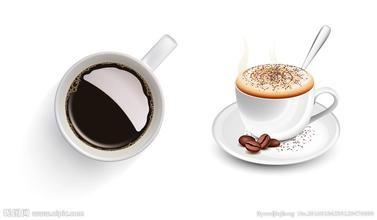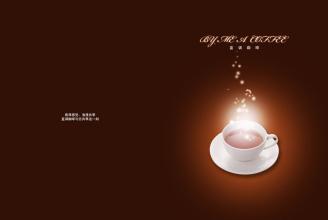Introduction to the Fine Coffee of Tanzania's Kilimanjaro Coffee
In 1886, Tanganyika Inland was placed under the German sphere of influence. In November 1917, British forces occupied the whole territory of Tanganyika. In 1920, Tanganyika became a British "mandated territory". In 1946, the United Nations General Assembly adopted a resolution to change it into a British "trust land." on May 1, 1961, Tanzania achieved internal autonomy, declared independence on December 9 of the same year, and established the Republic of Tanganyika a year later.
Zanzibar became a British "sanctuary" in 1890, gained autonomy on June 24, 1963, declared independence on December 10 of the same year, and became a constitutional monarchy ruled by the Sultan in early 2010. there was a new trend of political reconciliation in Sang Island. the Revolutionary Party and the Public Alliance Front reached an agreement on the formation of a unity government in Sangdao. In July of the same year, the Sang referendum adopted a resolution on the establishment of a national unity government. In November, the general election was held smoothly, the Sangdao National Unity Government was established, and the President, the second vice president and 11 ministers came from the Revolutionary Party. Sang's first vice president and 8 ministers from the RUF rainfall types are divided into bimodal distribution and unimodal distribution. The areas with double bee rainfall include the provinces around the Lake Victoria basin, the northeast highlands, the coastal and inland northeastern. The bimodal rainfall area is characterized by two rainy seasons. The short rainy season occurs from September to December. The total rainfall can reach 200-500 mm. The long rainy season occurs from March to May, and the rainfall reaches 300-600 mm. The areas outside the double bee distribution rainfall area belong to the single bee distribution rainfall area. The rainfall time is from November to April, and the rainfall is up to 500-1000 mm.
Tanzanian coffee has also been developed in the hands of German and British colonists and has long been loved by Europeans and squeezed into the ranks of famous products. The most favorable factors that make Tanzanian coffee famous are Hemingway and his novels.
Hemingway has been integrated with Tanzania and Mount Kilimanjaro since he embarked on his career as a writer in France. When Hemingway became famous, Tanzanian coffee became famous.
Europeans gave Tanzanian coffee the nickname "coffee gentleman", making it the pinnacle, and the "king of coffee" Blue Mountain, "coffee lady" Mocha and known as the "coffee swordsman".
Mount Kilimanjaro in Tanzania ("Kilima" means mountain, "Zaro" means radiant) is 5895 meters above sea level, connected to Mount Mt.Meru, and is the main coffee production base in Tanzania. Moshi and Alesha, located on the southern slope of Mount Meilu, also produce a large number of high-quality coffee beans. Eighty-five percent of Tanzanian coffee is grown on small farms.
When coffee produced in these regions is sold on the international market, the trademark is usually "Pride of Kilimanjaro (Pride of Kilimanjaro)", "Peaks of Kilimanjaro (Top of Kilimanjaro)", "Tanzania Moses" or "Tanzania Alesha".
After Jesuit introduced bean fruit to Europe in 1893, "Tanzania bean fruit" began to attract attention from all walks of life. For some reason, the yield of "bean fruit" in Tanzania is higher than that of ordinary coffee. In the international market, there are more products with the words "Tanzania beans and fruits" than those with the words "Kilimanjaro".
Generally speaking, Tanzanian coffee has a "crisp" characteristic, exudes delicate aroma, and contains wine and fruit aromas, endless flavor. Locally, it is similar to Kenyan coffee, but overall, it is closer to Sumatra Lloyd's coffee. After drinking Tanzanian coffee, you will feel a soft earthy smell around your mouth. Coffee gourmets often use words such as "wild" or "wild" to describe it. It can be said that pure Tanzanian coffee is "the most African coffee."

Important Notice :
前街咖啡 FrontStreet Coffee has moved to new addredd:
FrontStreet Coffee Address: 315,Donghua East Road,GuangZhou
Tel:020 38364473
- Prev

Introduction to tobacco-flavored Guatemalan coffee taste manor boutique coffee
In 1996, the 36-year guerrilla war ended by signing a peace treaty. [7] in the general election in Guatemala on November 9, 2003, Oscar Belher, the candidate of the National Grand League, was elected president, and the National Grand League is the most powerful party in Parliament. The participation rate is 54.5%. [7] on September 9, 2007, presidential and congressional elections. Otto Perez, Molina and Al.
- Next

Introduction to Costa Rican Yerzaro Coffee Flavor and Fine Coffee in Manor
In 1949 Figueres Ferrer handed over power to the elected leader of the National Union Party, O. Ullat Blanco. In October 1951, led by Figueres Ferrer, the National Liberation Party was founded. In the six general elections from 1953 to 1978, the National Liberation Party won four times. When the party was in power, it stressed that the state intervened in the economy, nationalized some industries and raised import taxes to protect the nation.
Related
- Detailed explanation of Jadeite planting Land in Panamanian Jadeite Manor introduction to the grading system of Jadeite competitive bidding, Red bid, Green bid and Rose Summer
- Story of Coffee planting in Brenka region of Costa Rica Stonehenge Manor anaerobic heavy honey treatment of flavor mouth
- What's on the barrel of Blue Mountain Coffee beans?
- Can American coffee also pull flowers? How to use hot American style to pull out a good-looking pattern?
- Can you make a cold extract with coffee beans? What is the right proportion for cold-extracted coffee formula?
- Indonesian PWN Gold Mandrine Coffee Origin Features Flavor How to Chong? Mandolin coffee is American.
- A brief introduction to the flavor characteristics of Brazilian yellow bourbon coffee beans
- What is the effect of different water quality on the flavor of cold-extracted coffee? What kind of water is best for brewing coffee?
- Why do you think of Rose Summer whenever you mention Panamanian coffee?
- Introduction to the characteristics of authentic blue mountain coffee bean producing areas? What is the CIB Coffee Authority in Jamaica?

